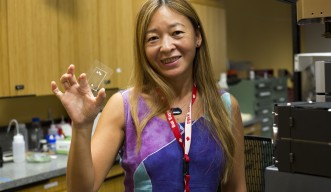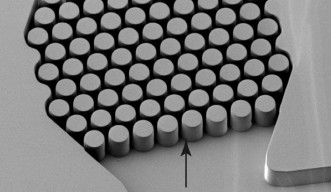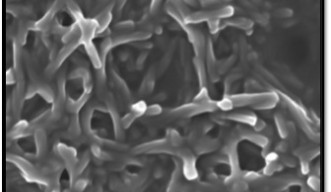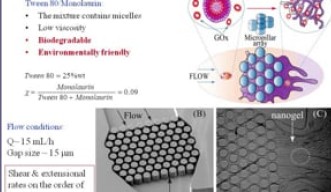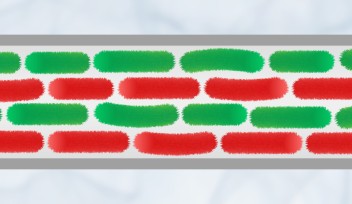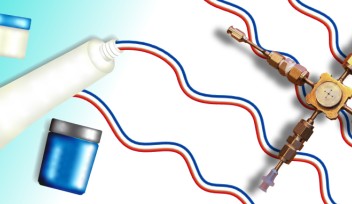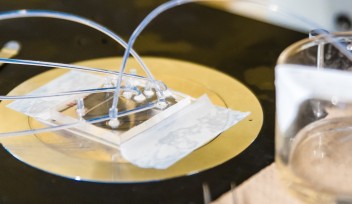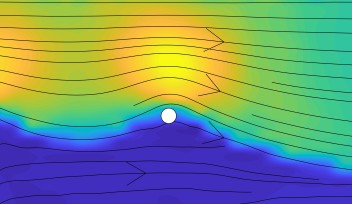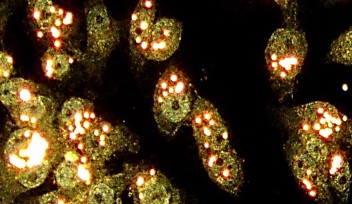Smartgels Are Thicker Than Water
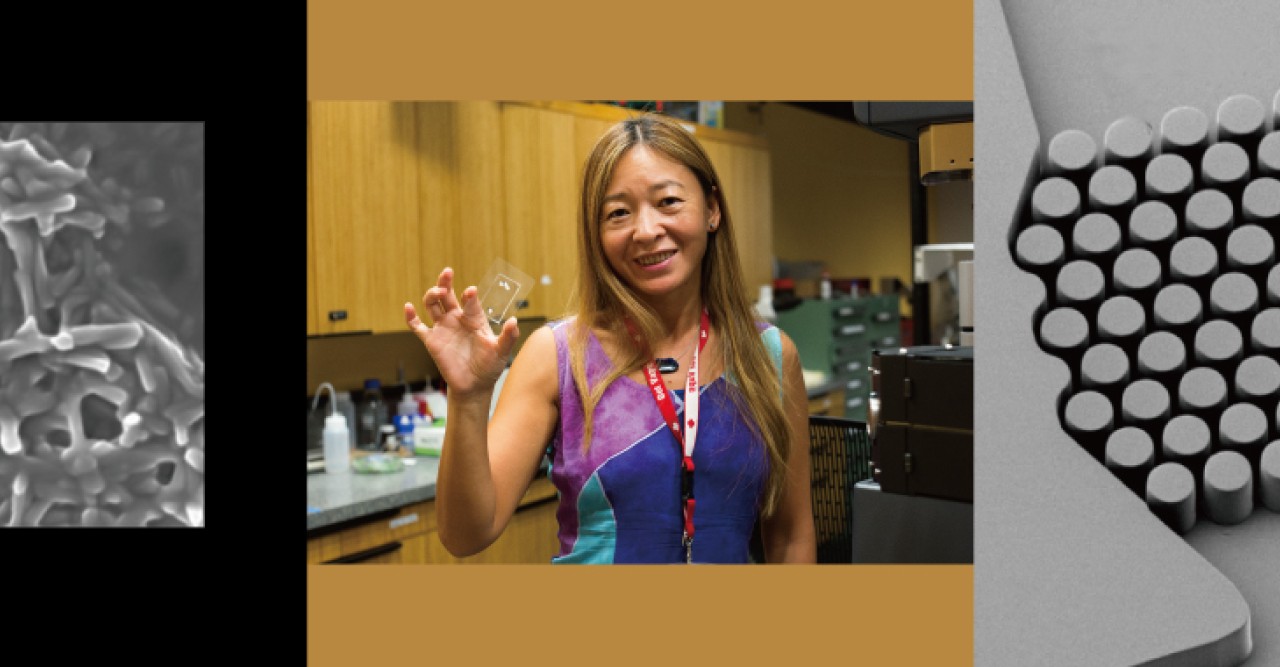
Transforming substances from liquids into gels plays an important role across many industries, including cosmetics, medicine, and energy. But the transformation process, called gelation, where manufacturers add chemical thickeners and either heat or cool the fluids to make them more viscous or elastic, is expensive and energy demanding. Take shampoo, for example. Without gelation, the contents of the shampoo bottle would be thin and watery. Instead of squirting a gooey dollop into the palm of your hand, the shampoo would rush between your fingers and escape down the drain before you could slather it on your head.
Now, Okinawa Institute of Science and Technology Graduate University Professor Amy Shen is experimenting with a new method of gelation. Shen leads the Micro/Bio/Nanofluidics Unit at OIST, where she changes the way that liquids behave using microfluidic platforms, which are flat, palm-sized trays with microscopic channels for the liquid to pass through. Researchers can add nanoparticles or biomolecules with useful pH, chemical, and temperature sensing properties into a liquid, but incorporating those liquids into existing technology proves difficult. “A gel is easier to integrate into a device,” Shen explained, pointing to biomedical devices and sensors, “whereas liquid just evaporates.” Most recently, Shen and her Ph.D students Joshua Cardiel and Ya Zhao created a glucose sensitive gel that more effectively stabilizes a glucose-sensing enzyme. This would make it possible to efficiently produce less invasive glucose testing devices for diabetics, who often have to check their blood sugar five times or more each day. This research was published August 7th, 2014 in the Royal Society of Chemistry’s Lab on a Chip.
To induce gelation, Shen’s lab first molds a microfluidic platform out of transparent rubber, creating grooved channels through which liquid can travel. Sometimes the platforms look like thin rivers snaking through a squishy microscope slide; other times she puts posts in the middle of a wider channel to create gaps of just few microns in width, about one-tenth of the width of a single human hair. Then, they pump a watery and soapy mixture through the platform, and it emerges from the other side as a thick gel. “In this way, we are able to change phase from water to something more like hair gel,” Shen explained. She estimates that her method requires just half of the chemicals that traditional gelation processes require.
In previous research, Shen’s group suggested a mechanism for this method. The soapy mixtures she uses as starting materials tend to form tiny aggregates of soap molecules, which can be spherical or more oblong depending on the soap concentration, temperature, and acidity. They manipulate the mixture recipe to adjust the number of oblong aggregates, ideally so that they look like long, skinny worms before passing through the microfluidic platform. The structure of the platform allows these aggregates to fuse and form Y-shaped junctions. The arms of these Y-shaped aggregates can further tangle together, which gives the gel its stiffer, more viscous and elastic properties.
Shen’s group determined that by adding more ingredients to the initial soapy mixture, they can create gels with unusual properties, which they call smartgels. “We can encapsulate things like enzymes or carbon nanotubes into the gel scaffold,” she said. “Once the liquid mixture passes through these microposts, you have a gel.” For their Lab on a Chip publication, Shen and her lab created a gel that encapsulated glucose oxidase, or GOx, an enzyme that is frequently used in glucose test strips because it generates a measurable electric signal in response to glucose. They then showed that the gel could use a single gel scaffold to accurately sense blood glucose levels over a much wider range than current glucose sensing technology. The gel contains water, which prevents the GOx enzyme from drying out, thus stabilizing it better than current glucose test strips. Furthermore, Shen and her lab can create the gel under room temperature and ambient pressure, both critical to maintaining GOx’s functionality. Shen also envisions that the gel could be incorporated into a patch that would sense blood glucose for days or weeks at a time. The gel has the potential to be more biocompatible than current implantable devices, which often provoke an immune response within 5-7 days of use.
Yet glucose sensing is just the start. Shen sees many possibilities for the new gelation method, in part because it offers a new way to encapsulate and immobilize nanoparticles and biomolecules. “It is hard to move and control a lot of nanoparticles because they are just so tiny,” she said. Incorporating nanoparticles into a gel simplifies the moving process, and it means that Shen can create gels with any property by developing the proper molecule. As long as the molecule is compatible with the host liquid, Shen and her lab can turn it into a gel. “It could be carbon nanotubes,” she suggested, “or it could be a molecule that is sensitive to hydrogen peroxide.” In fact, the Shen lab created an electro-conductive gel patch by connecting tiny carbon nanotubes within the gel. As Shen concluded, “The possibilities are endless.”
by Poncie Rutsch
Specialties
Research Unit
For press enquiries:
Press Inquiry Form










